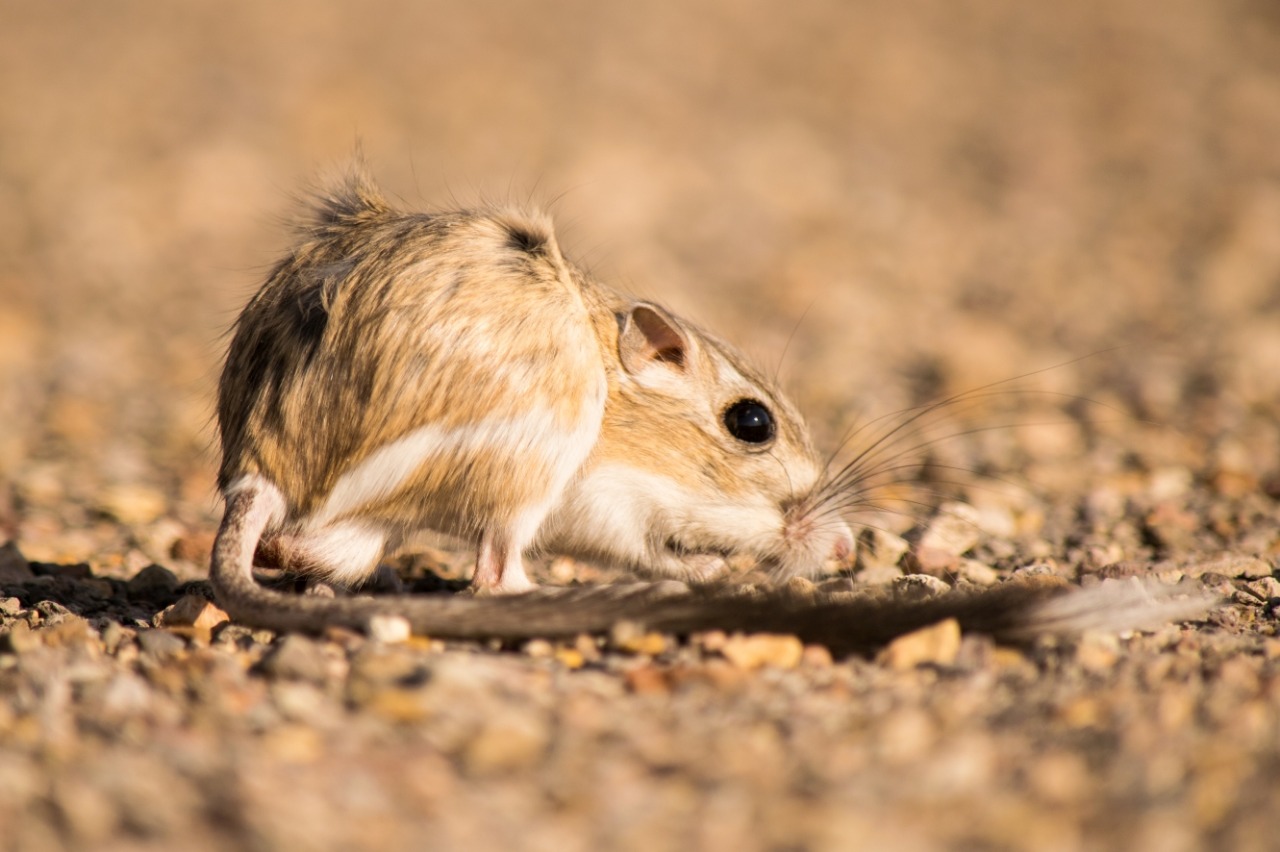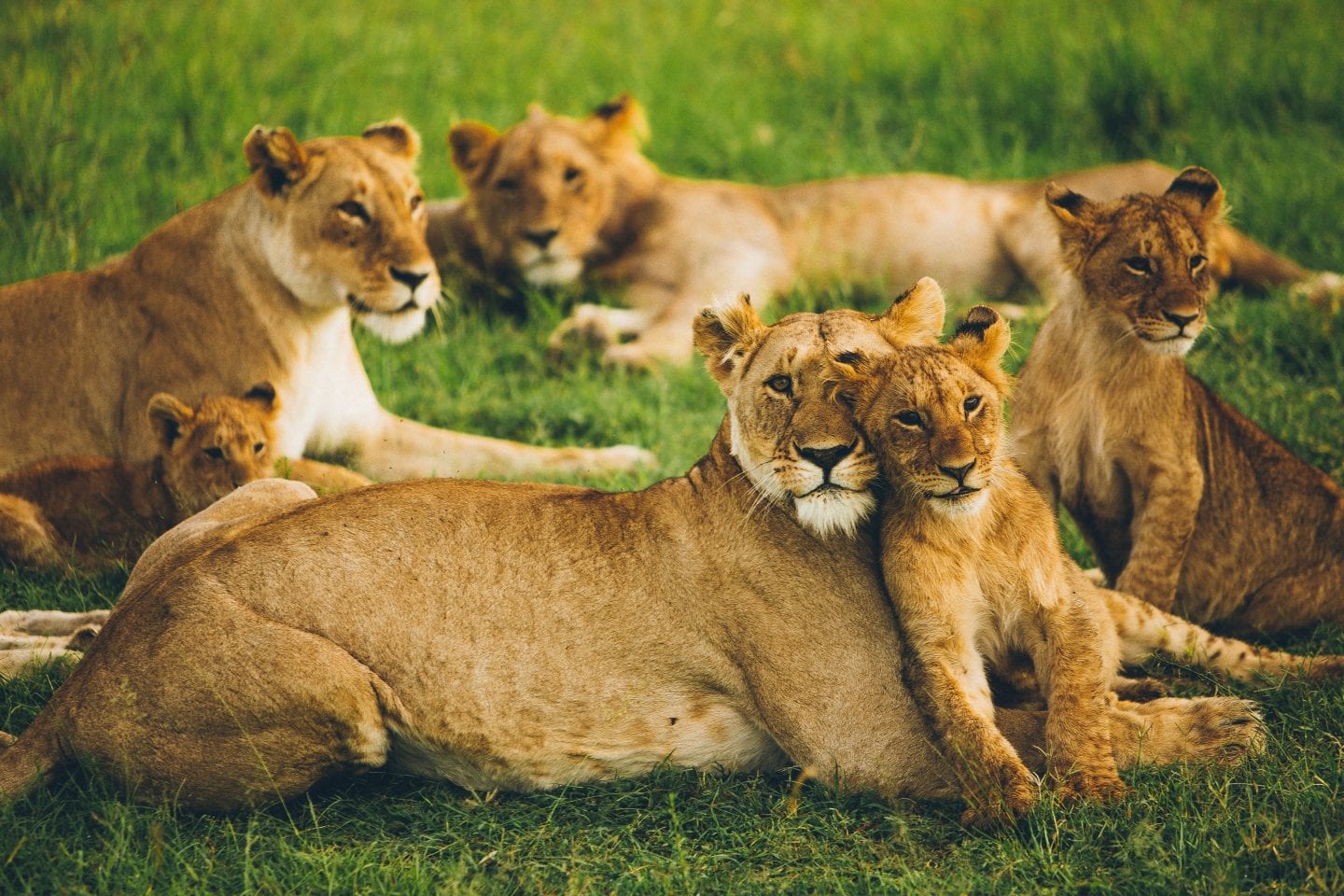Kangaroo rats employ a diverse suite of adaptations to survive the harsh climatic and predatory environment of the desert.
This strategy is part of the series “Biomimicry of the National Parks” by author and educator Adelheid Fischer. By exploring the biological strategies of iconic landscapes, Heidi’s work uncovers a deeper value to protecting and exploring national parks—not just as places of beauty and recreation, but as vital sources of inspiration for solving some of humanity’s greatest challenges.
Introduction
One night, many years ago, as I was driving down on a gravel road in the Sonoran Desert, I spotted something really extraordinary. There in my headlights was a furry shape the size of a baked potato. It had big eyes, long, powerful hind limbs and a pair of foreshortened front legs. For a few moments it paused upright in the car beams, then hopped a few steps exactly like, like….a miniature kangaroo! If Elvis himself had suddenly parachuted down on the hood of my car wearing one of his winged jumpsuits, I couldn’t have been more surprised. What the heck was a kangaroo Mini-Me doing in the Arizona desert?
Turns out that the little critter in my headlights was a kangaroo rat. Its name is something of a double misnomer since this desert hop-along is neither a kangaroo nor a rat. K-rats belong to a diverse group of small rodents known as heteromyids which, in the Sonoran Desert, includes four species of kangaroo rats and six species of pocket mice (more than half of the animals in this group have been documented in Saguaro National Park.) Despite their English names, heteromyids are more closely related to gophers than to rats and mice.
But don’t be fooled by the kangaroo rat’s cuddly-cute looks. K-rats are the ultimate desert survivalists.
The Strategy
Detect and Evade Lightning-fast Predators
Enlarged middleear cavities called “bullae” amplify ultra-low frequency sounds. Then in the inner ear, there’s an array of neurons that each fire a signal in sync with a specific sound frequency. Even the slightest change in these low frequency sounds sends a noticeable change in the signals, enabling k-rats to hear the nearly inaudible swoop of predatory owls or the minute change in air pressure caused by striking rattlesnakes. This sonic heads-up takes a streamlined pathway to the brainstem and muscles, bypassing decision-making centers of the brain, and allowing k-rats to become airborne in less than 50 milliseconds.
The leap itself is powered by very long hind legs, relative to body length, with large muscles and thick tendons. But it’s not just a rote reflex. Swinging their long tails like divers swinging their arms, the animals can control their angular momentum and twist out of reach, often while delivering a powerful karate kick that sends attackers like snakes flying in the opposite direction.
These catch-me-if-you-can maneuvers have turned k-rats into internet phenoms known as “ninja rats” to their legions of fans.
Nighttime cameras have also recorded these pint-sized mammals boldly strutting up to coiled snakes to perform drum rolls or acrobatic leaps right under their noses. Some taunt their adversaries with the ultimate insult—kicking sand in their faces. These behaviors, known as predator-deterrent maneuvers, are intended to discourage attacks by advertising the rats’ fitness and the futility of pursuing them.

Keep Hold of Precious Water
But its martial arts accomplishments aren’t the k-rat’s greatest superpower. These desert dwellers can survive without drinking free water––an incredible feat in a place where temperatures in the summer climb into the triple digits Fahrenheit and rainfall is episodic. K-rats mostly rely instead on what’s known as metabolic water,––the byproduct that is released in the digestion of the mesquite beans and grass seeds in their diets. Elaborate waste-processing structures in the k-rat’s kidneys extract every last drop of moisture from urine until it is reduced to a crystal-like consistency. In this way they provide nearly all the water they need in-house. Humans, by contrast, can expect to receive only about 8-10 percent of their water through the metabolism of the food they eat.
These frugal water stewards also employ a Swiss army knife of other strategies for conserving water. For example, they forage at night when temperatures are lower and humidity levels are higher and transport the dry seeds and beans they’ve collected in fur-lined cheek pouches instead of in their mouths. This keeps the seeds from absorbing saliva and extracting precious water from the k-rat’s body.
Build Your Own Private Cave System
Perhaps no skill is more impressive—or more important—than that of structural engineering. Kangaroo rats build elaborate burrows that provide the animals with nurseries for their young, shelter from the broiling sun, and protected pantries for their seed hoards. Biologist Clint Collins of Sacramento State University observes that these constructed tunnels can persist for years, if not decades, without collapsing, even though they bake in the desert’s dry heat and flood with monsoon rains. So sound are these hideaways that evidence suggests they are handed down from one generation to another.
Collins points out that humans shore up underground structures with materials such as reinforcing concrete or steel. By contrast, k-rats build durable burrows, even in unstable sand, using only locally available supplies. To find out how they do it, Collins teamed up with engineering colleague Dr. Idil Akin of the University of California, Los Angeles, and Dr. Haluk Beyenal of Washington State University in a study funded by a 2022 grant from the National Science Foundation.
They note that k-rat burrows are home to a spectacular diversity of microbes and fungi that are transported below ground on the animals’ feet and in their cheek pouches. Many of these microbes produce protective films of complex sugars and s that trap moisture, keep the microbes together, hold them in place, and stabilize the loose soil around them. Mixing these microbes in soils to create such bio-cements may be one factor that enables k-rats to build long-lasting habitations.
A 2023 article in the journal Science Advances reports that similar kinds of biocrusts have helped to preserve sections of the Great Wall of China for more than five centuries. Communities of , mosses, lichens and other microorganisms infiltrate and bind with soil particles to create erosion-resistant surfaces. “It’s nature’s form of rebar,” Collins observes.
The Potential
The kangaroo rat’s suite of survival skills offers many sources of potential innovation, many of which are already being actively investigated. Locked-sync signaling can be used in various industries to similarly detect very subtle and rapid changes in frequency signals. Using microbial mats to cement soils for construction and infrastructure can cut down on carbon-heavy traditional concrete use. And lined packaging to manage moisture loss can help aid refigeration-free food preservation.


